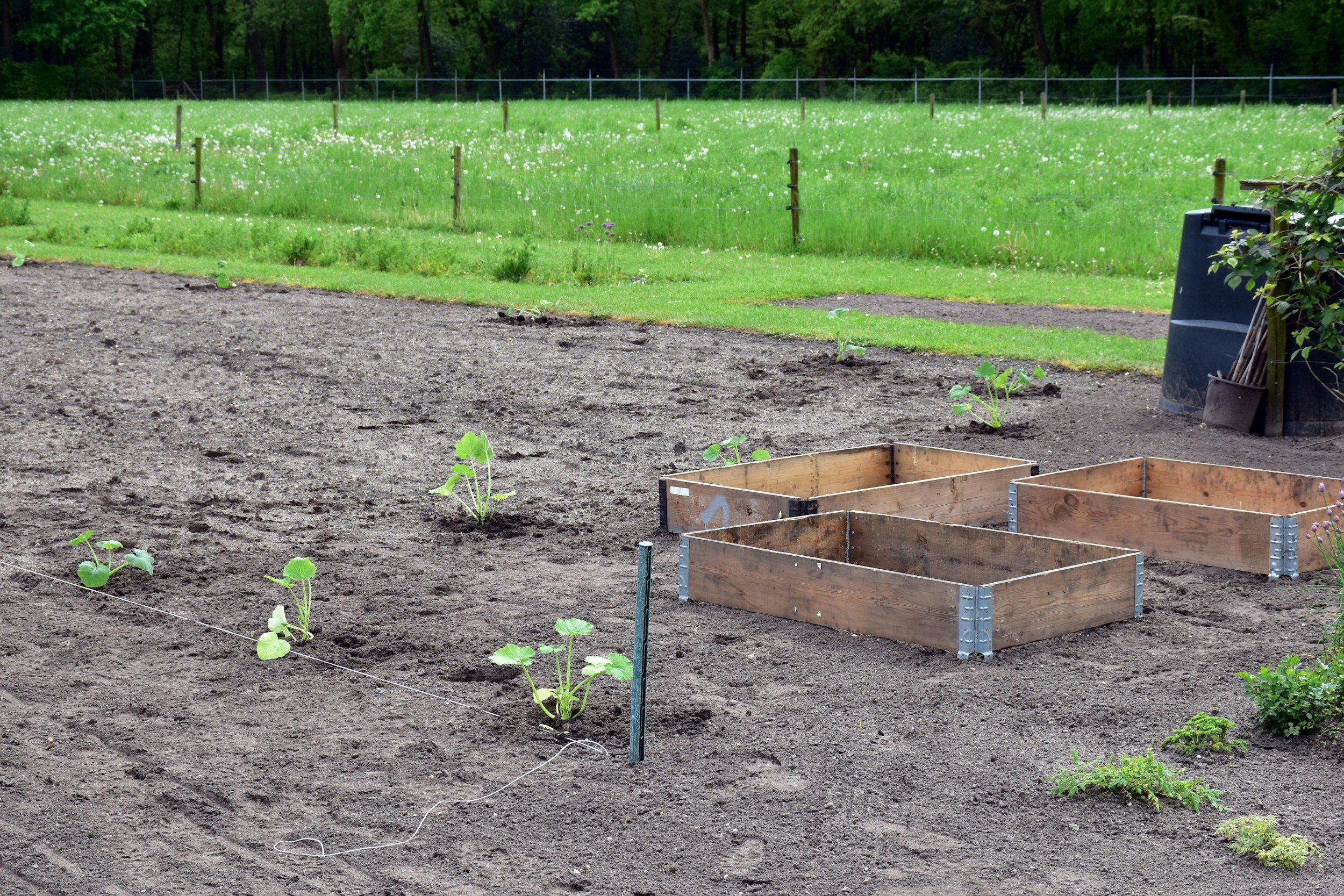Poultry Integrated Organic Farming
The Surest Way of Advancing Sustainable Agriculture and SDGs by 2030
Submitted by: Paul Onuh, United Agro Farmers Cooperative Society Limited, #Youth4Soil
About this Solution
Where has it been applied: At the subsistence level, with plots of lands from Chibiri farming settlement in Kuje Area Council, Abuja, Nigeria as a pilot or test project.
When/Where to apply:
Where there's limited supply of arable lands to meet the needs of the people.
Regions prone to leaching and erosion.
Regions with poor soil stability and water retention capacity.
Regions prone to high surface temperature and desert encroachment.
Rehabilitation and management of badlands and/or barren soil, where adequate irrigation is present.
Description
Poultry integrated organic farming is a form of intensive subsistence farming system, where poultry farms are incorporated into croplands for the sole purpose of gaining access to readily available high quality organic manures, while also converting crop waste into litter and soil amendment materials to further boost soil fertility and prevent nutrient depletion of arable soil.
Recently, there is an urgent need for a novel method of an ecofriendly farming system at this tipping point of climate crises, which poultry integrated organic farming stands to represent best. First and foremost, it's quite necessary for prospective farmers to decide on which crop will be best suited for the soil. While rice demands clay soil, cassava is best grown on loam soil.
Thereafter, field is cleared of grasses and weeds. Though, clearing may be done by bush burning, such action must be discouraged as a means of preparing croplands for farming purpose. Bush burning may add ash, which contains Ca, Mg, K, and Na to the soil. Where the ash often acts as a liming material, thus improving soil pH.
But then again, it sterilizes the soil by killing both harmful pathogens and some useful soil micro-organisms, and leads to the loss of N, S and C as gases. As a result, it contributes to green house gas emissions momentarily and subsequently exposes soil to erosion, while also destroying its structure & organic matter at a later period. In the long term, it reduces soil water and fertility.
However, the best thing to do, is clear the bush and heap the rubbish for decomposition to enrich the soil as manure or spread them evenly across the land to serve as mulching materials, while introducing your seeds and seedlings onto farmland. Mulching is the use of organic materials to cover seedbeds when crops have been planted.
The role of mulching is:
To reduce the rate of soil water evaporation and direct impact of solar energy i.e. temperature moderation.
Smother weeds and reduce competition with crop plants.
To add organic matter and nutrients to the soil on decomposition and mineralization.
Thus, it improves infiltration rate and water retention capacity.
Next comes the construction of a poultry farm house. This must be sited at a favorable position, somewhere near the perimeter of a given farmland. It must be properly secured to prevent intruders from getting access to birds and its associated by-products. Poultry birds are kept for egg or meat production. These may include chickens (domestic fowl), turkey, ducks and geese. Though, the most common of them in Nigeria are the domestic fowls.
Birds are reared mainly for their meat, eggs and manure. Moreover, poultry manure is a vital source of plant nutrient in the soil. They are quite rich in organic urea, a rich source of nitrogenous fertilizer. Besides, the droppings of birds are all carefully collected, dried, and dugged into the soil or spread out evenly on the surface as 'farmyard manure'.
After land clearing, the soil may be tilled or ploughed to break it up. If the ground is bare, large and flat, mechanized farming should be recommended. But where land is rocky, small or undulating, mechanized farming is ruled out. Instead manual labor is employed and implements like hoe and matchet are used to prepare the farm. Ridges and mounds are made at certain instances, and the seeds are buried beneath the soft soil.
Let's digress briefly to poultry farm housing. Where apart from wood shavings, some other suitable litter materials could include crushed cobs of maize— after removing the grains, dry cowpea and bean pods and dry peanut shells. These waste products of crop produce ends up reducing cost of poultry production in both the short and long term.
Also, compost heaps may be prepared at the latter stage, and poultry litter droppings later introduced into the soil. That goes a long way advancing circularity in the agric-sector i.e. promote a circular system in agric production.
In general, this singular farm practice alone should facilitate the achievement of SDG 12 across the agric-sector by 2030, if practiced wholeheartedly.
How to Implement
Land preparation and clearing.
Spread out your farmyard manure & mulch materials on arable lands.
Cultivate your chosen crop on farmlands.
Construct your poultry housing units along perimeters of farmlands.
Commence poultry husbandry for meat or egg production.
Collect and dry poultry dropping.
Reintroduce them into cropland as organic manure.
Reintroduce your crop waste products into poultry farmhouses as suitable litter materials subsequently.
Prepare your compost heap at a later stage with additional poultry litter droppings to be spread evenly on cropland at a prearranged time.
The cycle goes on and on except for (4).
Tips:
This solution is well suited for year round crop production and dry farming, but there's a need to pay some attention on exposed bare soil along access route of croplands. In any case, they must be kept covered to protect the farm from erosion by wind and heavy rainfall.
Such areas are prone to erosion by running water and must never be left bare. Hence, use of mulch to cover bare soil and open ground surfaces, where soil is exposed between crop is quite crucial here.
Inspiration
Africa has been through a lot from impact of climate change. For the past decade until recent, several hectares of arable lands and/or virgin lands were lost due to land use expansion in favor of agriculture and resource extraction. And that has aggravated further the impact of climate change on my beloved continent, abruptly leading to the wanton rate of desertification, drought, soil infertility and degradation and loss of biodiversity, which had characterized the continent lately.
But without a strong drive for sustainable agricultural practices, the continent’s food systems will further worsen environmental destruction. While the citizenries will also continue to be overly dependent on food imports.
Infact, about 74% of agricultural production growth in sub-Saharan Africa since 2000 has been achieved through area expansion and only 26% from increased yields. This is too far from ideal if we are to collectively combat the triple planetary threats of a changing climate, biodiversity loss and desertification in near future.
Hence, the current issues at stake has really inspired me to propound a feasible and viable solution, which should help salvage societal related problems regarding soil degradation across sub-Saharan Africa, with my little experience in the field of Earth Science and Agroecology.
I began implementing my solution on Jan. 2024, with the help of some poultry farmers. They also engaged in subsistence farming of Yam, Maize, Millet, Cassava & Groundnut. So, I made a bold decision one day by helping them increase crop outputs, while protecting their farms from leaching and other adverse impacts of agricultural practice on croplands in today's society through integration of their poultry business along with crop production under a healthy farming ecosystem.
What have you achieved so far with this solution?
An increase in soil porosity and hydraulic conductivity on farm settlements, which later advanced soil stability of croplands.
It enhanced further boost in organic humus content with time, while favoring a healthy soil structure on pilot farm sites.
A stark improvement in infiltration rate and water retention (holding) capacity of cropland.
It also lowered the bulk density of soil on tested croplands, and provided substrate for soil micro-organisms. This went a long way to improve soil cation exchange capacity of farm areas, which helped in buffering the soil.
This actually helped to mitigate the impact of waterlogging from heavy rainfall on arable lands used for the pilot project.
Why should other soil health projects implement it?
It's the cheapest & surest way to advance sustainable agrifood system at this tipping point of climate crisis.
It facilitates circularity across the agrifood system.
It reduces unnecessary pressure on forest lands for agrifood production.
It's ranks among the best way to preserve pristine environments for future generations.
It promotes a bright prospect for badlands and barren soil across the globe, to be turned into productive arable lands in the near future, when adequate irrigation is in place.

Have you applied this solution in another context?
Let us know so we can reflect your experiences on this page!
Reach out to CA4SH Communications at communications@coalitionforsoilhealth.org







